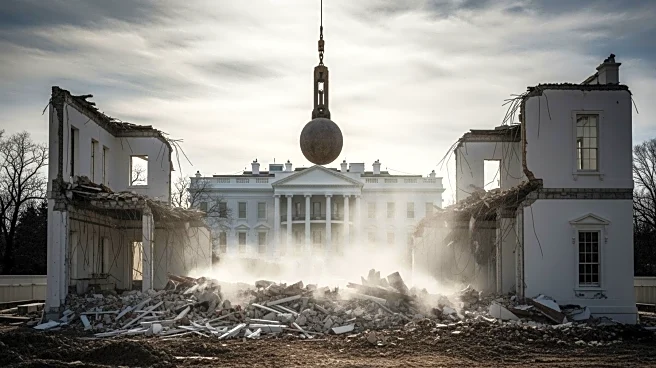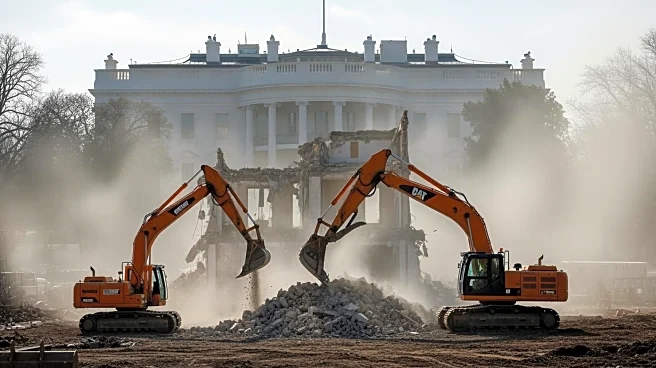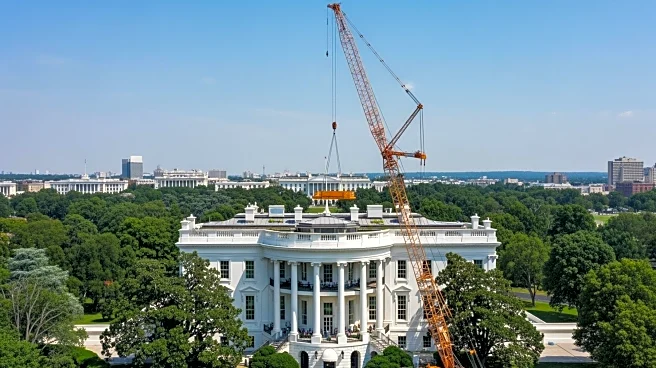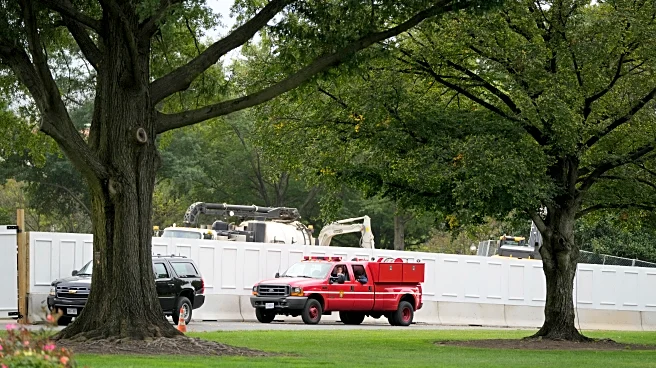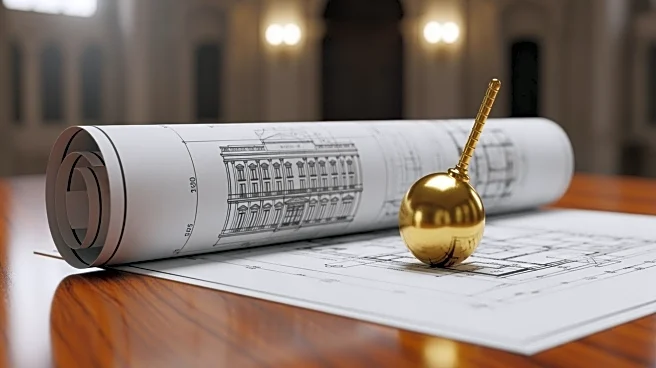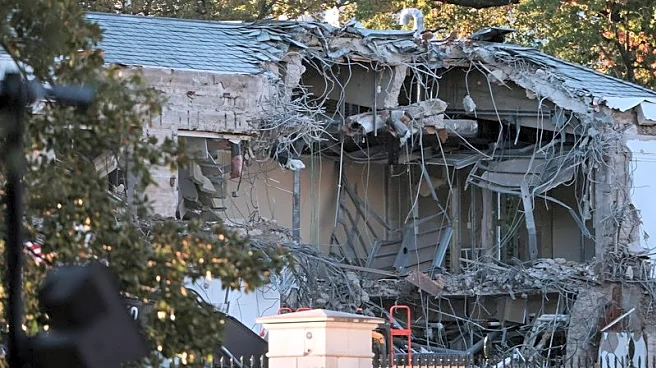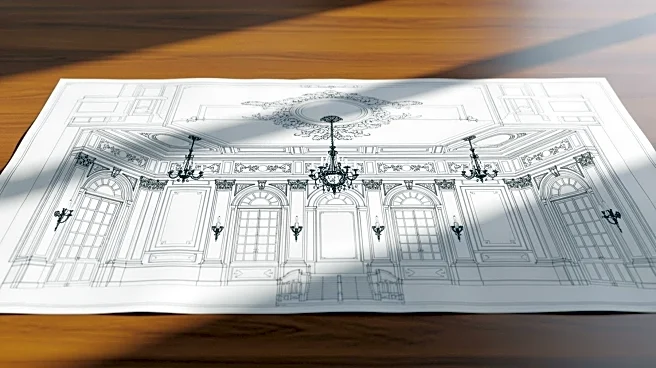What's Happening?
The White House has commenced demolition of the East Wing to make way for President Trump's new ballroom, despite previous assurances that the construction would not interfere with the existing structure.
Heavy machinery was brought in to dismantle part of the East Wing, marking the start of the $200 million project funded by Trump and private donors. The new ballroom, designed to hold 999 people, will replace the current East Wing event space, which accommodates 200 guests. The project aims to preserve the architectural heritage of the White House while providing a modern venue for future administrations.
Why It's Important?
The construction of a new ballroom at the White House signifies President Trump's commitment to enhancing the venue's capacity for hosting large events. This development could impact the historical integrity of the White House, raising concerns among preservationists. The project reflects Trump's focus on infrastructure and his willingness to invest in significant renovations. The ballroom's completion may influence future presidential events and diplomatic gatherings, potentially altering the dynamics of political and social functions held at the White House.
What's Next?
As the demolition progresses, stakeholders such as the Secret Service and Treasury Department employees are observing the changes. The project is expected to continue with the construction of the new ballroom, which will feature bulletproof glass and a design consistent with the White House's historical architecture. The completion of the ballroom may lead to increased hosting capabilities for the White House, affecting how future administrations utilize the space for official events.
Beyond the Headlines
The decision to demolish part of the East Wing for a new ballroom raises questions about the balance between modernization and preservation of historical sites. The project may set a precedent for future renovations at the White House, influencing how historical buildings are adapted to meet contemporary needs. The involvement of private donors in funding the project highlights the role of private investment in public infrastructure.
